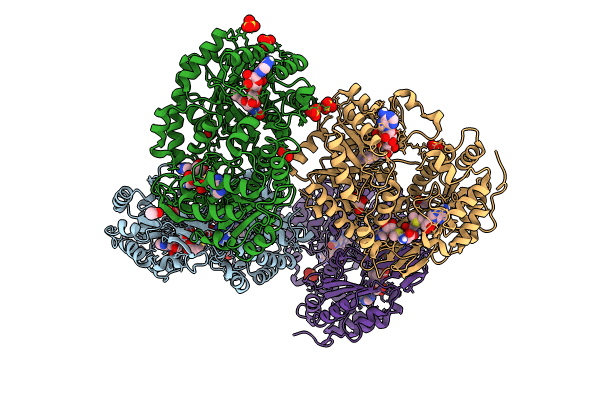
Deposition Date
2023-11-12
Release Date
2024-06-19
Last Version Date
2024-07-03
Entry Detail
PDB ID:
8UY2
Keywords:
Title:
Methylenetetrahydrofolate reductase from Chaetomium thermophilum DSM 1495, AdoMet-bound, Inhibited (T) State
Biological Source:
Source Organism:
Thermochaetoides thermophila DSM 1495 (Taxon ID: 759272)
Host Organism:
Method Details:
Experimental Method:
Resolution:
2.83 Å
R-Value Free:
0.20
R-Value Work:
0.18
Space Group:
P 2 21 21


